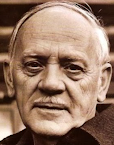 |
| Robert Monroe |
Psychologist Leo Ruickbie writes in “The Ghost in the Time Machine,” his 2021 prize winning essay in a competition sponsored by the Bigelow Institute for Consciousness Studies: Ideas of a second, or ‘subtle’ body can be traced back to Antiquity, and are found in the remote past of other cultures. Much research was done on “travelling clairvoyance,” “doubles” astral bodies, “extracorporeal action,” and “astral projection,” but it was not until 1943 that such phenomena were classified as the now more familiar “out-of-body experience” (OBE) by G.N.M. Tyrrell – a term adopted and popularized by Celia Green and Robert Monroe, among others.
Sylvan Muldoon described passing through physical things and beings during his “astral projections,” and a later study of 1,007 OBErs found that 38% experienced “self-permeability,” i.e., the ability to pass through physical objects. In addition, 40% reported seeing themselves (autoscopy) whilst having an OBE – other studies have reported 56–82% for this experience. An online survey of 16,185 OBErs found that 62% were associated with lucid dreams, and 49% involved “seeing through closed eyelids.” Almost half had some sort of encounter, either “seeing or feeling the presence of an unknown physical being” (22%), or “seeing, hearing or speaking to a deceased loved one” (24%) – Monroe described several encounters with the deceased. One study included cases of OBErs reporting events from past lives (15%), potentially linking the experience with reincarnation.
Over the years many people have attempted to test whether OBEs are really out of the body. H. Durville described holding a piece of paper with large letters printed on it in front of the half-open eyes of a hypnotized subject, Marthe – she claimed she could see nothing, but when the paper was placed before her “double,” specifically at the nape of the neck, she then proceeded to read it without difficulty. Charles Tart conducted experiments with “Miss Z,” placing a random five-digit number on a shelf above her bed whilst she slept and attempted to leave her body. On the final night of the trial she read the number correctly. K. Osis and D. McCormick apparently successfully tested Dr. Alex Tanous’s ability to leave his body.
In his report to the US Army Operational Group in 1983 concerning the “Gateway Experience” (a Monroe Institute programme), Lieutenant Colonel Wayne M. McDonnel, Commander Det. O, wrote that “human consciousness can, with enough practice, move beyond the dimension of time- space and interface with other energy systems in other dimensions.” McDonnel reported that the technique could also be used to “travel” into the past and future. During his training at the Monroe Institute one of the trainers told him that “numerous experiments have been conducted involving persons moving from one coast [of the USA] to the other in the out-of-body state to read a series of ten computer generated numbers in a university laboratory [...] most have acquired enough of the digits to make clear that their consciousness was present.” Experiments such as these were part of the US government’s long-running research into remote viewing, Project Star Gate.
More recently, Patrizio Tressoldi and colleagues conducted experiments with a group of five OBErs, with the group scoring considerably above chance in correctly identifying the target images at a location approximately 190 km away. They stated that “All participants reported a phenomenological experience of a disembodied personal selfhood able to perceive simply by an act of will without the physical limitation of eyesight, to move in the environment instantaneously and exist in a sort of three dimensional world with no awareness of time.” Tressoldi’s paper was rejected by the journal Frontiers in Human Neuroscience because, among other things, the findings violated “the basic laws of physics as they are currently understood,” which was surely the point.
In addition to a hundred years’ worth of successful experiments, supporting evidence comes from other avenues. According to Jeffrey Long’s NDERF survey, an out-of-body experience was the most common feature of an NDE, being reported in three-quarters (75.4%) of all cases – Greyson and Stevenson had earlier found 70%. Other studies have shown that as many as a quarter (22– 25%) of people have spontaneous out-of-body experiences, that is, without having to be “near death” at the time.
Leo Ruickbie, “The Ghost in the Time Machine,” his 2021 prize winning essay in a competition sponsored by the Bigelow Institute for Consciousness Studies. Ruickbie teaches psychology at Kings College and the University of Northamptom in the United Kingdom. Footnotes have been deleted from these online excerpts from his essay. The entire essay may be downloaded at the Bigelow site https://bigelowinstitute.org/contest_winners3.php.




No comments:
Post a Comment